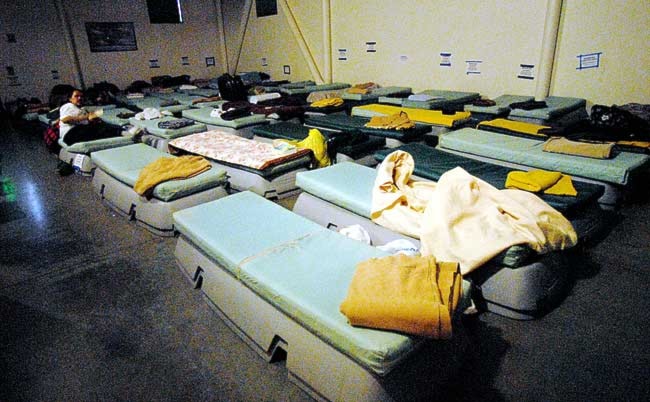Would Raymond Silverfox be alive today if the government had acted on a report published seven years ago? It’s impossible to say, but the probable answer is yes.
All the more shameful, then, that the report in question, spurred by a death that holds many eerie parallels to Silverfox’s own, continues to gather dust.
Like Silverfox, Madeleine Henry died from complications of pneumonia after being held in the RCMP’s drunk tank in May of 2002.
Like Silverfox, she was of First Nation ancestry. And, like Silverfox, her death would provoke a coroner’s inquest and subsequent government task force charged with looking for better ways to handle hard-core alcoholics.
The task force, comprised of representatives from the RCMP, Health and Social Services and the Yukon Hospital Corporation, visited Anchorage, Alaska, looking for answers in May of 2003.
They found them. What Anchorage has is far from a panacea for homeless alcoholics, but it’s a considerable improvement to what we have here.
There, police are rarely the ones who pick up homeless alcoholics. That’s usually the job of roving vans staffed by medical technicians. The program is called Community Service Patrols, and its sole purpose is to get the dangerously drunk off the streets.
These patrols don’t haul people off to police cells. Instead, they deliver them to a special facility called the transfer station.
It’s basically a glorified drunk tank, but with one important difference: an emergency medical technician is always present to respond to health problems.
This, needless to say, means if someone were to begin repeatedly vomiting and soiling himself, as Silverfox did the night he died, he would receive the care he needed.
The station itself sounds bleak. It is a long, narrow room bare of furnishings. Clients receive a sleeping mat, but no blanket, and bunk down on the concrete floor.
Sleeping stations are marked on the floor with yellow lines. Crossing the lines isn’t permitted. Men and women sleep on separate sides of the room. Clients need to pass a breathalyzer test to demonstrate they’re adequately drunk in order to enter.
Grim as it sounds, the site provides homeless alcoholics with a safe place to sober up. And it allows police to focus on other tasks than shepherding inebriated residents to cells. That’s a start.
This sleep-off shelter is just part of a network of services that strain to contain the problem of homeless alcoholics in Anchorage. There’s Pathways to Sobriety, an outreach program that tries to place the clients at the transfer station into different rehabilitation programs and counselling. And there’s a half-dozen different organizations that provide temporary shelter and supportive housing for alcoholics seeking to dry out.
Today, Anchorage continues to struggle over the question of how to help homeless alcoholics. The city is currently debating the idea of building a “wet house” that would allow clients to drink in their rooms. The idea is controversial, but a similar project has paid dividends in Seattle. Yukon’s non profits are proposing something similar for Whitehorse. (See story, page 41.)
What ever happened to the findings of Yukon’s task force in 2003? A number of the task force’s members moved out of the territory shortly after the report’s completion, said Patricia Living, a spokesperson with Health and Social Services.
And, evidently, the matter lost its sense of urgency. It didn’t become a political priority.
“It sort of fizzled away, unfortunately,” said Val Pike, a nurse with Whitehorse General Hospital who visited Anchorage.
She notes there are important differences between Whitehorse and Anchorage – population size being one of the most obvious. Anchorage, population 280,000, is 12 times the size of Whitehorse.
But Pike says there were valuable lessons learned from the trip. Unfortunately, nothing discernible was done afterwards.
So now we have another in-custody death, another inquest and another task force that’s charged with looking for solutions.
Contact John Thompson at
johnt@yukon-news.com
